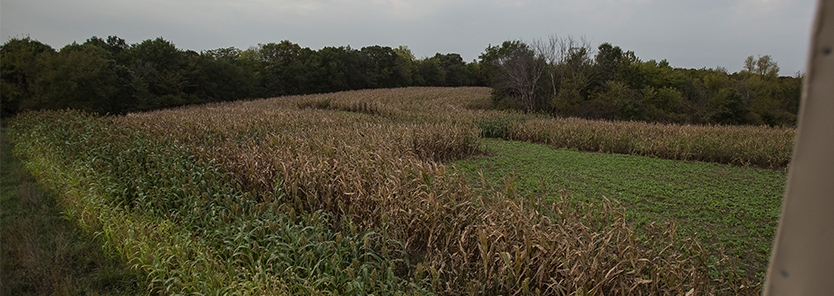When to Plant Food Plots
One of the most important aspects to learn about farming for wildlife is when to plant food plots. For example, the growing season for warm season annuals can vary widely across the nation. The northernmost part of the United States and on into Canada could have as little as 4 to 5 months of temperatures conducive to growing spring/summer crops. This is all dependent on how quickly the winter snow melts and soil temperatures rise as well as when the first hard freeze sets during the fall.
On the flip side, the Deep South can have 7-8 months of growing before frost sets in and kills a warm season planting.
What does this translate to and mean for the average gamekeeper planting food plots on their property? Depending on your location and stage of wildlife management you are in, warm season food plots can have different purposes. Let’s look at a couple of different scenarios.
When to Plant Food Plots in the North
For a guy who lives and plants in the rich and fertile soil of southern Iowa or other prime areas of the Upper-Midwest, a warm season food plot, such as BioLogic Spring Protein Peas or BioMass may be planted mostly for attraction and “keeping your deer at home.” The surrounding agricultural fields of soybeans and alfalfa in this area are hard to beat when it comes to spring/summer nutrition for does carrying fawns and bucks that are rebuilding their bodies and growing antlers.
With other high protein food sources around, a warm season food plot may not be as critical in this area for nutrition, but it can be a major attraction when it’s in the right place and used the right way. This far north, a warm season annual like peas and beans may only have 90-100 days to grow before its time to turn the field over for a cool season planting, especially on a year like this when we had fresh snow in April and May. In this area, mid-July through early-August is the prime time to get crops like turnips, radishes and other brassica crops planted so that you get the amount of growth needed to feed the deer in a northern climate throughout the winter.
This is something to think about when making your food plot plan for the upcoming year.
When to Plant Food Plots in the South
The polar opposite of this would be someone planting in let’s say the Low Country of South Carolina or other neighboring states. The southernmost states have a lot of agricultural crops that have a positive impact on wildlife; they also have millions of acres of poorer soils that are covered in pine trees and low quality native habitat. Warm season food plots in these areas can be very beneficial from a nutrition standpoint because it may well be the best source for miles around.
With soils that warm up enough to plant in mid-April and frosts that may not arrive until mid-November, these areas can get up to 8 months of growth and forage out of a blend like Protein Peas or Lablab. These long lasting, slow maturing annuals can have a major impact on nutrition for the deer when it is providing high protein food for this extended time. The downside to having such an extended growing season is these crops may still be producing great forage when it is time to get your fall/winter plots planted in that same field. This is when it is really beneficial to have fields large enough to utilize two separate crops or at least leave some of the warm season crop standing while you prepare the other portion of the field for cool season food.
Cool season food plots in these areas of the south may be more about attraction than nutrition. Although most anything you plant for a fall/winter crop in the south is going to have more nutrition than any native plants at that time of year, deer in the south are not relying on these as a survival source like they might in areas with much colder temperatures and heavy snowfall.
What’s Ideal?
The ideal situation for anyone planting food plots, regardless of location, is to have enough available acreage to devote certain areas to warm season crops and other for cool season. I fully realize not everyone has this option, but for those who do it can make things a little less complicated on timing. If you have fields that are large enough to split in half, or even in thirds, you can utilize several different plantings and allow each of them to reach full maturity while also planting at the ideal time for that crop and your region. For those who have plenty of tillable ground available is to use some areas solely for destination feeding fields, particularly during the spring/summer, and others for hunting set ups. Having multiple food plot crops in the same field can do a lot for attraction, too, as whitetails can sometimes be picky eaters. The plant diversity gives them some options depending on their taste of the day.









